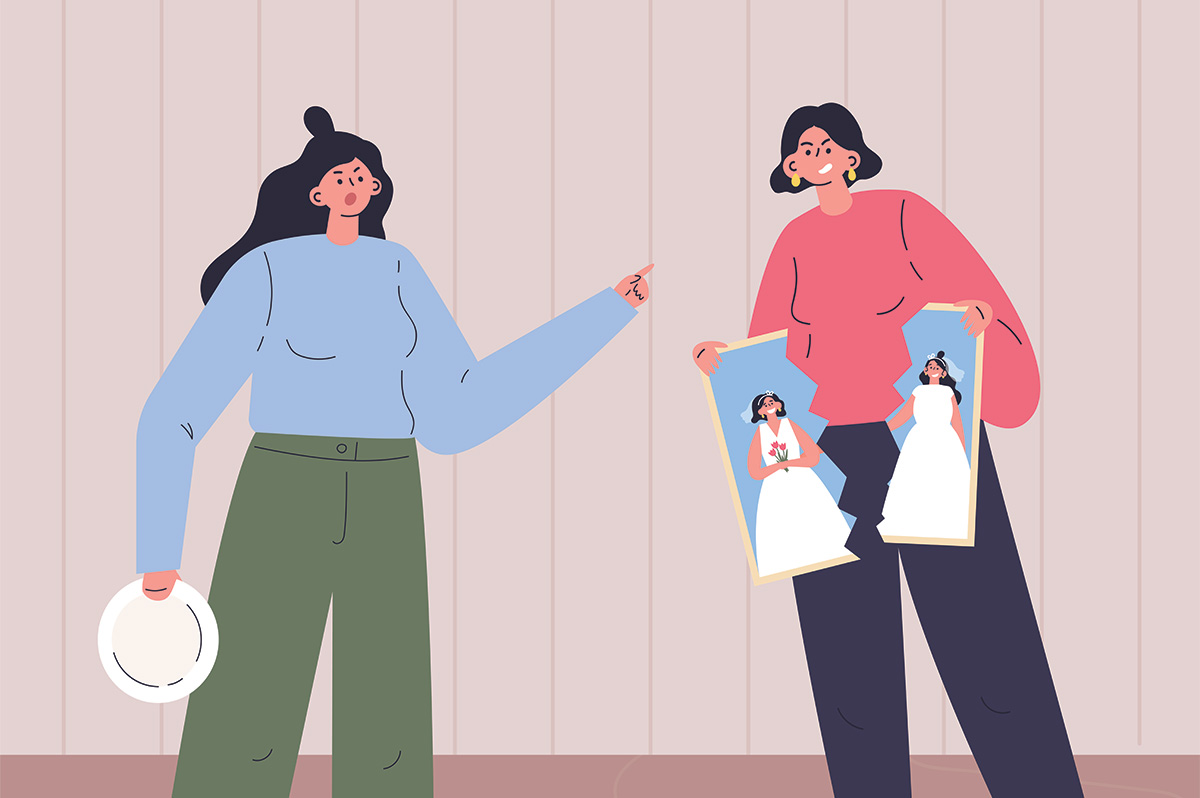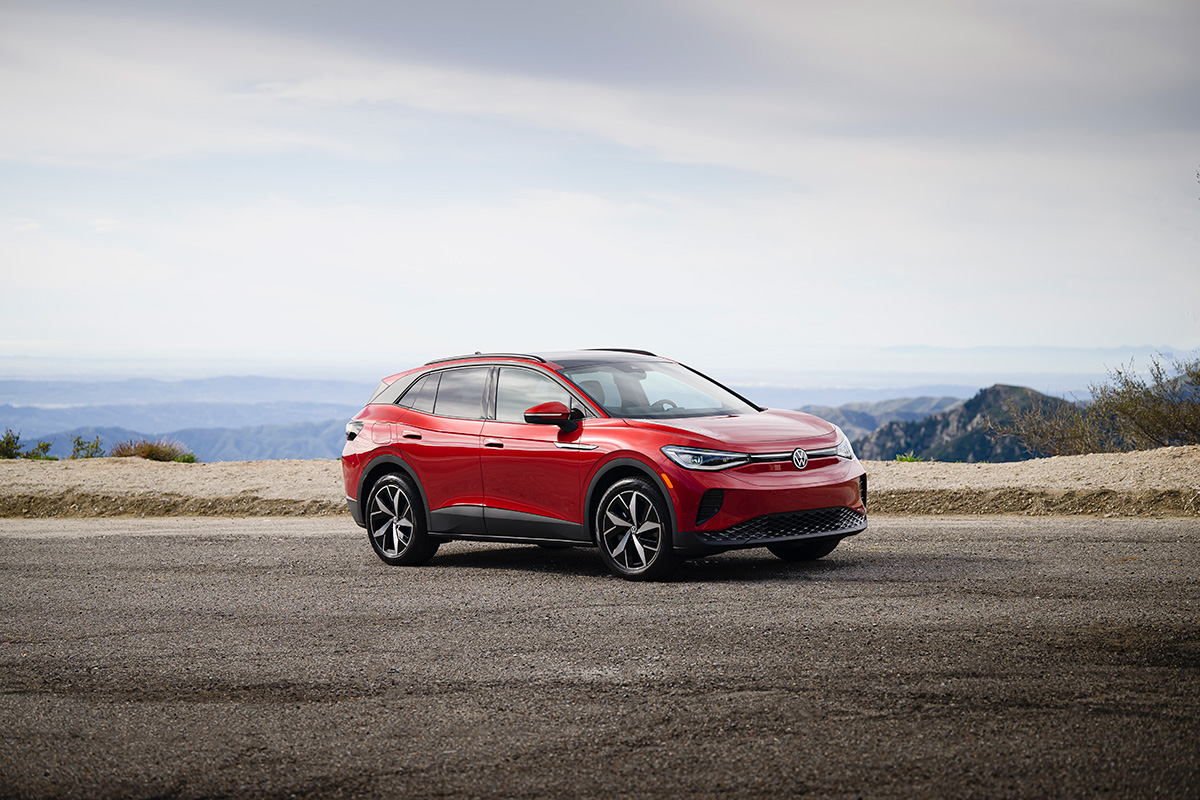Living
Gay, bi men remain key to HIV epidemic
After 30 years of AIDS, many breakthroughs but infection rates on the rise
On June 5, 1981, the U.S. Centers for Disease Control and Prevention published an article in its authoritative journal Morbidity and Mortality Weekly report that experts now consider the first signal that an unprecedented worldwide epidemic had begun.
“In the period of October 1980-May 1981, 5 young men, all active homosexuals, were treated for biopsy-confirmed Pneumocystis carini pneumonia at 3 different hospitals in Los Angeles, California. Two of the patients died,” the MMWR article stated.
“Pneumocystis pneumonia in the United States is almost exclusively limited to severely immunosuppressed patients,” said the article. “The occurrence of pneumocytosis in these 5 previously healthy individuals without a clinically apparent underlying immunodeficiency is unusual.”
It would take another few years before scientists named the condition detected in the men discussed in that MMWR article as Acquired Immune Deficiency Syndrome or AIDS. The name AIDS followed an earlier term used by some researchers and the media – Gay Related Immune Disorder or GRID.
In reflecting on the tumultuous developments surrounding AIDS over the past 30 years, leaders of AIDS advocacy organizations and LGBT activists in the U.S. who lived through the early years of the epidemic say that, to some extent, the MMWR article of June 1981 still has considerable resonance for gay men.
They acknowledge that so much has changed for the better over the past 30 years, including breakthroughs in biomedical research resulting in highly effective drugs that transformed AIDS from a death sentence into a manageable, chronic illness like diabetes.
But AIDS activists also point out that HIV and AIDS continue to disproportionately impact gay men or men who have sex with men (MSM) in the United States and other countries.
And although the perception of AIDS as a “gay disease” has largely receded from the minds of most Americans, AIDS activists say they find themselves in the ironic position of having to remind Congress and state and local governments that more resources and funding are needed for HIV prevention programs targeting gay and bisexual men.
“MSM is the only group for whom, according to the CDC, new infections are still increasing,” said Ronald Johnson, vice president for policy and advocacy for AIDS United, a national group formerly known as AIDS Action.
“So there continues to be a concern that there is not enough targeted prevention resources to MSM, particularly MSM of color and young MSM of all races and ethnicities,” Johnson said.
According to the CDC, while MSM account for about 2 percent of the U.S. population, more than half of all new HIV infections in the U.S. each year (53 percent) occur among MSM. CDC data also show that MSM make up nearly half of all people living with HIV in the U.S. – 48 percent.
CDC figures show that white MSM “account for the largest number of annual new HIV infections of any group in the U.S., followed closely by black MSM,” according to a CDC fact sheet released last month.
“There are more new HIV infections among young black MSM (aged 13-29) than among any other age and racial group of MSM,” the fact sheet says.
The Obama administration, with input from AIDS advocacy organizations, released a National HIV/AIDS Strategy document in July 2010 that, among other things, calls for an aggressive effort to develop better HIV prevention programs targeting MSM.
Johnson and Carl Schmid, deputy executive director of the AIDS Institute, a national advocacy group, praised the administration for developing the strategy document, which they say covers most of the bases needed for addressing HIV prevention programs for MSM.
But the two said the proposals in the strategy document have yet to be fully implemented. They note that delays in its implementation are due, in part, to the U.S. economic situation that has prevented needed increases in federal AIDS funds and severe cutbacks in state and local funding for AIDS-related programs.
Phill Wilson, president and CEO of the Black AIDS Institute, said in a commentary last week in the Washington Informer, a black community newspaper, that he fears the horrors of the AIDS epidemic of the 1980s, when friends and family members watched loved ones die due to a lack of effective medical treatment, could return to some degree in the next few years.
According to Wilson, if the federal government fails to boost funding for the federal-state AIDS Drug Assistance Program (ADAP), low income people who rely on the program to provide them the medications they need keep the AIDS virus in check could become casualties just as their predecessors became casualties years earlier. But this time, he said, an inability to gain access to medicine due to funding shortfalls would be responsible for their fate at a time when effective medicine is readily available.
He called such an outcome “immoral.”
The ADAP program was created under the Ryan White AIDS Care Act to provide life-sustaining drugs for low-income people with HIV and AIDS who are under insured or don’t have any health insurance to help pay for the drugs.
ADAP funding cuts by states and a large increase in the number of people applying for ADAP assistance has resulted in nearly 8,000 people being placed on state waiting lists for the AIDS drugs they need to remain healthy.
The health insurance reform law that President Obama proposed and Congress passed two years ago was expected to relieve the ADAP funding pressure on states when it takes effect in 2014. However, some states that oppose the law have filed lawsuits seeking to prevent its provision requiring all citizens to buy some form of health insurance from going into effect, making its outcome uncertain.
Nearly all AIDS advocacy groups support the law, saying it would strengthen medical care for large numbers of people with HIV/AIDS.
Dr. Anthony Fauci, director of the National Institute of Allergy and Infectious Diseases, an arm of the U.S. National Institutes of Health, has been the leading federal government official monitoring the AIDS epidemic and directing AIDS-related research since the disease burst on the scene in 1981.
In a speech commemorating the 30th anniversary of AIDS at NIH headquarters in Rockville, Md., on Tuesday, Fauci said he’s optimistic that an AIDS vaccine can be developed in the near future.
“We have scientific evidence that a safe and effective HIV vaccine is possible,” he said in a statement released on May 18.
“In 2009, a clinical trial in Thailand involving 16,000 people demonstrated for the first time that a vaccine could safely prevent HIV infection in a modest proportion of study participants,” he said. “Many of the best minds in HIV vaccine science are examining blood samples and data from the Thai trial to learn how the vaccine candidate prevented HIV infections and to consider how it could be modified to be more effective.”
Fauci said NIAID is also optimistic about development within the next few years of effective vaginal and rectal microbicides that can be used to prevent the transmission of HIV during sexual contact.
Fauci and other researchers have also pointed to studies showing the effectiveness to a certain degree of prescribing HIV drugs for use by non-infected people believed to be at high risk for HIV infection, such as men who have sex with men.
Known as pre-exposure prophylaxis, or PrEP, the use of this prevention measure is said to have the drawback of being less effective if people fail to take the drug as required. Some also have expressed concern that people using this prevention method are subject to potential side effects of the drugs and may be discouraged from using condoms, which experts say is one of the most effective methods of HIV prevention.
Events and developments in the early years of AIDS
• 1981: The CDC reports in its June 1981 edition of MMWR and subsequent editions that year that an estimated 170 gay men had succumbed to Pneumocystis carini pneumonia and Kaposi’s sarcoma, a rare skin cancer, over the preceding two years. The CDC studies of these cases cited a serious malfunctioning of the body’s immune system in those who contracted the conditions.
• 1982: Gay Related Immune Disorder, or GRID, became the first name to describe what is now known as AIDS. Cases reached epidemic proportions in the U.S., moving beyond clusters of gay men in New York, San Francisco and Los Angeles and into groups with no obvious risk factors.
• 1983: Gay leaders, independent medical researchers and health and social services agency officials testify before a congressional committee that the federal response to AIDS was highly inadequate. They issue a plea for the federal government and the Reagan administration to increase federal funding and federal initiatives to fight AIDS.
• 1985: In late July, actor Rock Hudson stunned the nation when he issued a statement saying he had AIDS and was receiving treatment in Paris that he said he couldn’t get in the U.S. He died three months later at age 59. His announcement and death drew massive mainstream media attention to AIDS. His death prompted his close friend, actress Elizabeth Taylor, to help found the American Foundation for AIDS Research to raise funds for AIDS causes.
• 1988: The NAMES Project AIDS Memorial Quilt makes its second trip to Washington in the spring, where it’s displayed on the Ellipse near the White House. Later that year, about 1,100 AIDS activists staged a protest at the headquarters of the U.S. Food and Drug Administration in suburban Maryland outside D.C., denouncing the FDA for taking too long to approve new drugs for people with AIDS. Police arrested at least 176 of the protesters after they blocked access to the FDA building’s main entrance.
Advice
How to cope when a partner gives you the silent treatment
Punishing behavior brings up memories of parent’s mistreatment

Michael,
My wife and I met less than two years ago and we were crazy about each other from the start. We wanted to spend life together so we just went for it. Maybe this wasn’t the most well-thought out decision on either of our parts but we thought that love conquers all.
But lately we’ve been arguing. The stuff we’re fighting about is never such a big deal: chores, or spending, or wanting to do different things on the weekend. But when I don’t want to go along with Michelle’s point of view, she gets angry and shuts down. Sometimes she stops talking to me for as long as a few days.
This is painful for me. My mom used to pull this stunt when I was a kid and she was mad at me. She also cut me off when I came out. We’re still estranged.
Michelle has a whole different take on this. She says I am being “mean” to her (when I don’t go along with what she wants) and this is painful, and she has to “take a break” to cool off.
I know she comes from a volatile family. She has told me there was a lot of screaming in her house, and she barely has a relationship with her parents as a result. So I get that she’s sensitive to conflict.
But I don’t think I’m being mean to her by standing up for what I want — certainly not enough to warrant her giving me the silent treatment.
We got married to have a great life together. We often do but I can’t live with someone who just shuts me out when she’s annoyed with me.
If I became a doormat and went along with everything she wants and never pushed back or complained, maybe she wouldn’t shut down. But I don’t want to do that.
I’d appreciate some ideas to improve the situation. I don’t want a divorce but I also don’t want to keep being mistreated.
Michael replies:
You can think of marriage — or any serious relationship — as a gym where you have ongoing opportunities to become an increasingly resilient person in the face of the ongoing challenges that an intimate relationship poses.
Your task here is to shift your focus toward figuring out how to handle yourself well, even in the awful circumstance of getting the silent treatment.
Michelle is not under an obligation to behave as you’d like her to. You can certainly ask her to stop withdrawing when she’s angry at you. But that doesn’t mean she is going to honor your request.
I well understand that Michelle’s punishing behavior is bringing up painful memories of your mother’s mistreatment. But if she doesn’t change her behavior, you have to find a way to live with Michelle as she is, with as much equanimity as you can muster, for as long as you choose to be married to her. If she does not change and you find her behavior to be unbearable, you can leave.
Every time she shuts down, Michelle is handing you an opportunity to figure out how you, yourself, can deal with feeling hurt and let down, rather than depending on someone else to behave as you’d like her to, or not upset you, or soothe you. Being in charge of your own mood rather than letting someone else press your buttons is a great skill to get better at.
I’m not going focus on what techniques you might use to soothe yourself — that’s a different column (or even better, a number of therapy sessions). That said, knowing that Michelle’s behavior comes from her history might help you to take it less personally. And, simply keeping in mind that living with a difficult spouse is unavoidable and worth getting better at may help you to quiet yourself down.
Another challenge that your marriage is pushing you to work on: Discerning when you can be generous, and when it is important to have a boundary. Of course, I understand that you don’t want to be a doormat by going along with whatever Michelle says and wants. But is it possible that she has a point, in that you could stand to lean more in her direction?
None of us get to have everything the way we want when we are in a relationship (much less in life). Figuring out the interplay between generosity and boundary is complicated. It often involves considering what is important to your partner; and deriving joy from her getting some of what is important to her, not only from your getting what you would like. And of course, it also involves figuring out what is most important to you.
If you set a boundary thoughtfully, because something is important to you, and Michelle doesn’t like it, you’re being handed an opportunity to get better at tolerating disappointment. Being a disappointment to your partner, and being disappointed in your partner, are both unavoidable parts of marriage: We’re all different, and at times will make choices that the other person really does not like.
If we make our decisions from a place of integrity rather than whim, entitlement, anger, or “whose turn it is”, and strive to honor the choices that our partners make from a place of integrity, this often makes the disappointment easier to bear.
Of course, it would be great if Michelle would join you in working to become a more solid and resilient spouse. As I mentioned earlier, you can’t persuade her to do so. But you can certainly tell Michelle what you are working on and ask her to consider how she, too, might use your relationship difficulties as a challenge to grow.
It isn’t easy to have such a conversation without sounding condescending. You are better positioned to do so when you are walking the walk, not just talking the talk. One good rule of thumb is to put you and your partner in the same boat, making it clear that you see the two of you as facing the same challenges, rather than positioning yourself in a superior position. Another is to initiate the conversation when you are both calm, rather than in the middle of a fight or when you’re getting the silent treatment.
One more point: If Michelle is willing, I’d suggest that you propose couples therapy as an opportunity for you two to collaborate on building a consistently loving relationship where neither of you lets your reactivity run the show.
Michael Radkowsky, Psy.D. is a licensed psychologist who works with couples and individuals in D.C. He can be found online at michaelradkowsky.com. All identifying information has been changed for reasons of confidentiality. Have a question? Send it to [email protected].

Electric-vehicle tax credits may have faded earlier this year, but EVs themselves are far from losing their spark. There are more charging stations than ever, battery ranges are longer and more realistic, and automakers have finally figured out that EVs don’t all need to look like geeky science projects or feel like failed beta tests.
Just look at these two compact electrics, which are futuristic, fun and flexible enough for work or play.
HYUNDAI IONIQ 5
$37,000 to $48,000
Range: 245 to 318 miles
0 to 60 mph: 4.5 to 7.4 seconds
Cargo space: 26.3 cu. ft.
PROS: Fast charging. Roomy cabin. Silky-smooth suspension.
CONS: Wide turning radius. Rear wiper not on all trims. Price creep.
After being introduced three years ago, what’s new for the latest Hyundai Ioniq 5? Mostly refinement. Charging is quicker, software is smarter and Hyundai continues to quietly listen to feedback, tweaking ride comfort and usability. Think of it as switching from messy eyeliner to a perfectly sharp wing.
Exterior styling remains one of this EV’s biggest conversation starters. Those pixel-inspired lights, crisp lines and slick hatchback-meets-crossover proportions exude refreshing confidence. There’s no trying to blend in, and that’s the point. Park this Hyundai anywhere and heads will turn.
On the road, the Ioniq 5 prioritizes calm over chaos. Steering is light, the suspension smooths out rough pavement and acceleration feels brisk without being aggressive. Safety tech is plentiful and well-calibrated—adaptive cruise control, lane-centering, blind-spot monitoring—all working together without seeming like a nervous backseat driver. IOW, this ride is supportive, not clingy.
Inside, the user-friendly cabin shines. The flat floor and long wheelbase create a lounge-like atmosphere, with excellent legroom and airy visibility. Seats are well-bolstered and available with eco-friendly materials, and the sliding center console adds flexibility. Cargo space is generous, and the wide windshield makes city driving stress-free. Alas, the rear wiper is only available on select models. Overall, though, I appreciated how everything looks modern without feeling cold.
What makes this Hyundai special is its vibe. An EV that embraces individuality without shouting about it.
Fun fact: The Ioniq’s ultra-fast charging can add hundreds of miles in under 20 minutes—perfect for those who hate waiting almost as much as they hate small talk on awkward first dates.
VOLKSWAGEN ID.4
$46,000 to $59,130
Range: 206 to 291 miles
0 to 60 mph: 4.4 to 7.7 seconds
Cargo space: 30.3 cu. ft.
PROS: Sure handling. Decent range. Good storage.
CONS: Body roll in curves. Fussy infotainment. No frunk.
The latest VW ID.4 focuses on polish. Software updates have fixed earlier frustrations, and overall drivability feels more cohesive. Less “learning curve” and more “hop in and go,” like a dependable bestie who doesn’t overthink things.
Styling-wise, this EV is intentionally inoffensive. Soft curves, friendly lighting and a familiar crossover shape make it approachable. While the ID.4 won’t turn heads like the Ioniq 5, that’s OK. It’s more akin to a classic outfit that always works—timeless, not trendy.
Driving the ID.4 is relaxed and predictable. This SUV prioritizes comfort over thrills, with a suspension tuned for daily commuting and long highway drives. Safety features are comprehensive and reassuring, including excellent lane assistance and collision-prevention systems. It’s the kind of car that quietly has your back, no drama required.
Inside, the ID.4 offers a calm, uncluttered cabin with good space for passengers and cargo alike. Rear-seat legroom is especially strong, making it a solid road-trip companion. The seats are plush, visibility is good and while the infotainment system isn’t the most intuitive, it’s improved enough to be more than tolerable.
The ID.4’s special sauce is balance. It doesn’t try to reinvent the wheel—it just electrifies it.
Fun fact: This is one of the most globally popular EVs, proving that sometimes being universally liked is a strength, not a personality flaw. Think, gold star gay who still surprises you.

Real Estate
Child- and pet-proofing your home for the holidays
It isn’t about being perfect but about being prepared

The holidays are meant to be joyful, cozy, and full of laughter — but if you have young children or pets, they can also feel a little chaotic. Twinkling lights, shiny decorations, guests coming and going, and tables full of tempting food can turn your home into a wonderland of curiosity and mischief. The good news? With a little thoughtful planning, you can keep the holiday magic alive while making your home safer for everyone who lives there.
There’s something oddly comforting about movies where animals go to war with holiday decorations, turning carefully strung lights and perfectly placed ornaments into chaos. Whether it’s a mischievous dog tangled in tinsel or a curious cat launching a full-scale assault on a Christmas tree, these scenes tap into a universal experience for pet owners.
The humor comes from the contrast: the human characters are trying to create warmth, tradition, and picture-perfect cheer, while the animals see the decorations as toys, obstacles, or personal enemies. The resulting destruction — trees tipping over, ornaments shattering, lights blinking out—feels exaggerated but relatable, especially during the already hectic holiday season.
Let’s start with decorations because they tend to be the biggest attraction. Ornaments sparkle, garlands dangle, and everything seems designed to be touched, pulled, or tasted. If you have little ones or pets, consider placing your most fragile ornaments higher on the tree and using shatterproof options on the lower branches. Tinsel and ribbon may look festive, but they can be dangerous if swallowed, so skipping them or keeping them well out of reach is a simple way to reduce risk without sacrificing style.
Holiday lights are another favorite fascination. Before hanging them, take a few minutes to inspect each strand for frayed wires or broken bulbs. Secure cords along walls or behind furniture so they’re harder to grab or chew and unplug them when you leave the house or head to bed. Not only does this help prevent accidents, but it also gives you one less thing to worry about during a busy season.
The Christmas tree itself can become a focal point for exploration. Make sure it’s sturdy and well-anchored so it doesn’t tip if a toddler tugs on a branch or a pet decides to investigate. If you use a real tree, cover the water base since tree water can contain additives that aren’t safe if consumed. For artificial trees, keep an eye out for loose pieces or needles that could become choking hazards.
Food is a big part of holiday celebrations, and it’s also one of the most common sources of trouble. Many traditional treats—like chocolate, grapes, raisins, alcohol, and foods containing xylitol—are dangerous for pets. Keep plates and serving dishes up high, secure the trash can, and gently remind guests not to slip pets or kids “just a little bite” without checking first. For children, be mindful of hard candies, nuts, and small treats that could pose choking risks.
Candles and fireplaces add warmth and charm, but they deserve extra caution. Flameless candles are a wonderful alternative if you want ambiance without worry. If you do use real candles, place them well out of reach and never leave them unattended. Fireplaces should always have a sturdy screen or gate, especially with crawling babies or curious pets nearby.
Holiday gatherings bring wonderful energy into your home, but they can also create new challenges. Doors opening frequently make it easier for pets to slip outside, so consider setting up a quiet, comfortable space where they can relax during busy get-togethers. This can help reduce stress for them and give you peace of mind. For children, stair gates, locked cabinets, and clear boundaries can help prevent accidents when there’s extra excitement in the air.
New toys and gifts are another thing to watch closely. Packaging, twist ties, plastic wrap, and especially button batteries should be cleaned up promptly. These items are easy to overlook in the excitement of gift-opening but can be dangerous if swallowed. Taking a few minutes to tidy up as you go can make a big difference.
Lastly, try to keep routines as steady as possible. The holidays naturally disrupt schedules, but familiar mealtimes, naps, walks, and bedtime rituals help children and pets feel secure. A calmer household often means fewer accidents and a happier experience for everyone.
At the end of the day, child- and pet-proofing your home for the holidays isn’t about being perfect but about being prepared. A few small adjustments can help you relax, enjoy your guests, and focus on what truly matters: creating warm, happy memories with the ones you love. When your home feels safe, the holidays feel even sweeter.
Valerie M. Blake is a licensed Associate Broker in D.C., Maryland, and Virginia with RLAH @properties. Call or text her at 202-246-8602, email her at [email protected] or follow her on Facebook at TheRealst8ofAffairs.




















